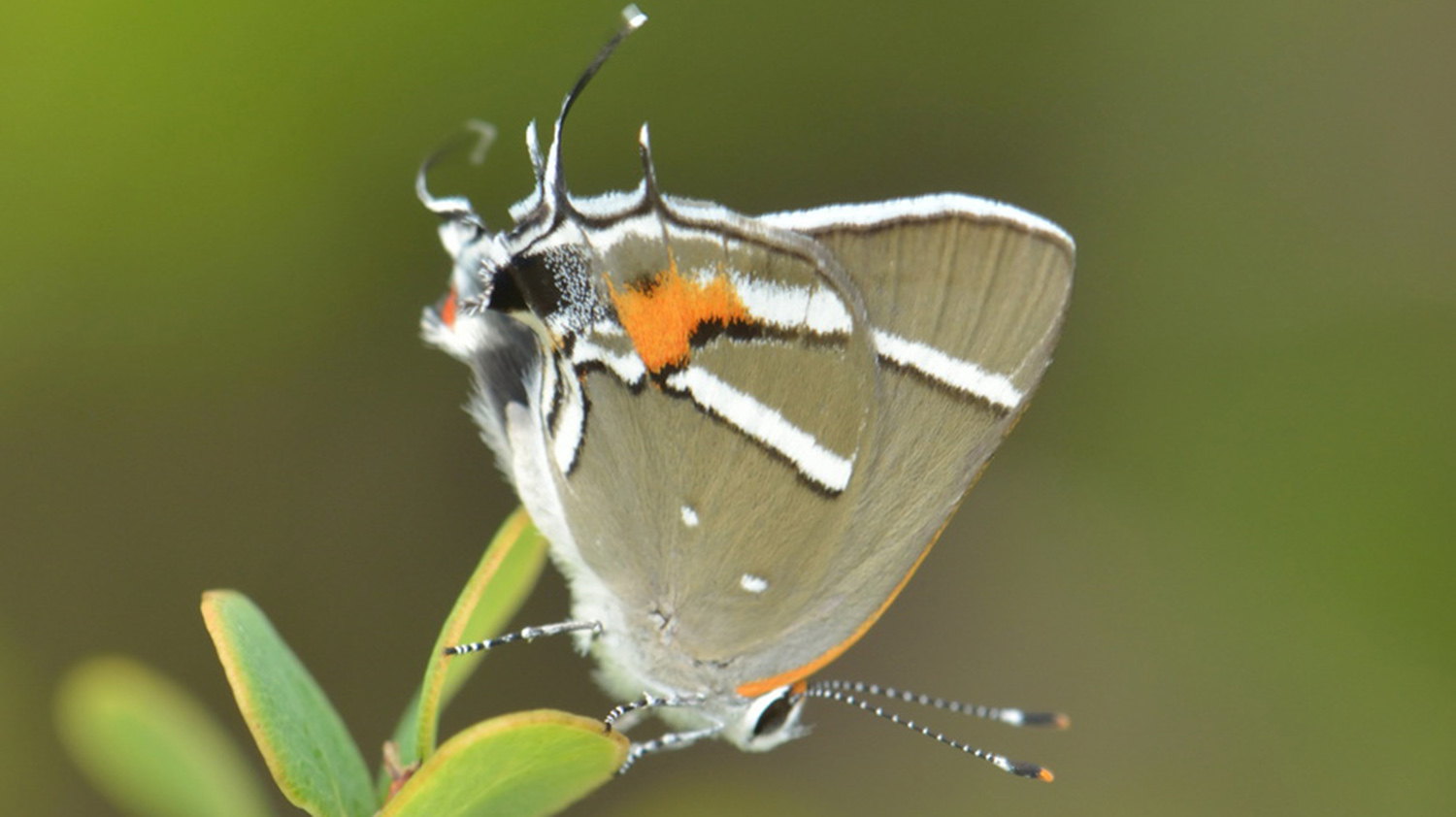
A new study from North Carolina State University shows that ongoing habitat management could help prevent hurricane-driven extinctions. The study found that a rare Florida plant, the pineland croton, weathered the damage from Hurricane Irma better in plots that were under human management than those left alone. The work could have implications for management of rare species in the face of extreme conditions.
Pineland croton is a perennial shrub found in the pine rockland forests of south Florida. This rare plant requires fire to survive, and is the only host plant for two species of endangered butterfly – Bartram’s scrub-hairstreak and the Florida leafwing. Without croton, the butterflies will go extinct.
“It may seem strange to associate fire with places like the Everglades and Florida Keys, but these plants flourish in rocky, dry areas that aren’t usually seasonally flooded,” says Erica Henry, postdoctoral researcher at NC State and first author of a paper describing the work. “Historically, pine rocklands burned frequently, and the croton seems to both seed and re-sprout following fire. But in the Keys particularly, using fire to maintain these habitats isn’t possible due to human development.”
Henry was initially interested in determining the most effective means of managing croton populations in Everglades ³Ô¹ÏÍøÕ¾ Park and the ³Ô¹ÏÍøÕ¾ Key Deer Refuge on Big Pine Key. However, in 2017 Hurricane Irma struck Florida and created another opportunity for research.
“We had been looking at managed and non-managed plots in both locations – the Everglades and the Keys – since 2015,” Henry says. “Our initial focus was on the difference between mechanical understory removal and/or controlled burns versus nonmanagement, but Irma gave us the opportunity to see if any sort of human management helped recovery in the aftermath of a natural disaster.”
Prior to the storm, Henry found that croton populations with consistent fire management in Everglades ³Ô¹ÏÍøÕ¾ Park were stable, whereas those on Big Pine Key that hadn’t been burned in 15 years were declining at a rate of 20% per year. “This is a fast rate of decline and causes real problems for the butterflies that depend on these plants,” Henry says.
Henry resampled plants from both sites 10 months after Irma. The two locations experienced differing effects from Irma: the Keys suffered from storm surge and wind gusts up to 160 mph, while the Everglades were not overwashed and experienced wind gusts up to 100 mph. Plant survival in both locations was much higher in managed plots than in unmanaged plots, but being outside Irma’s eyewall meant plants in the Everglades did better overall.
“The hurricane was especially bad on Big Pine Key,” Henry says. “Areas on the Key that hadn’t been managed suffered the most, but the habitat management seemed to help.”
The endangered butterfly, Bartram’s scrub-hairstreak – whose numbers were declining prior to Irma – hasn’t been seen on Big Pine Key since, but are still present in the Everglades ³Ô¹ÏÍøÕ¾ Park. Henry hopes the research will give park and land management officials strategies to harden habitats against natural disasters.
“It seems that even in extreme conditions best practices remain best practices,” Henry says. “The pine rockland habitat depends on human management. In areas where that doesn’t happen, we lose species and biodiversity. Management gives these habitats a better chance for survival in an era of rapid change.”
The research appears in and was funded by the ³Ô¹ÏÍøÕ¾ Science Foundation (DEB 1801289), Florida Keys ³Ô¹ÏÍøÕ¾ Wildlife Refuges and Everglades ³Ô¹ÏÍøÕ¾ Park. Aerin Land of Everglades ³Ô¹ÏÍøÕ¾ Park, Martha Reiskind of NC State and Nick Haddad, formerly of NC State and currently at Michigan State University, also contributed to the work. A video from the researcher presenting this work, for embedding in articles, is here:
-peake-






